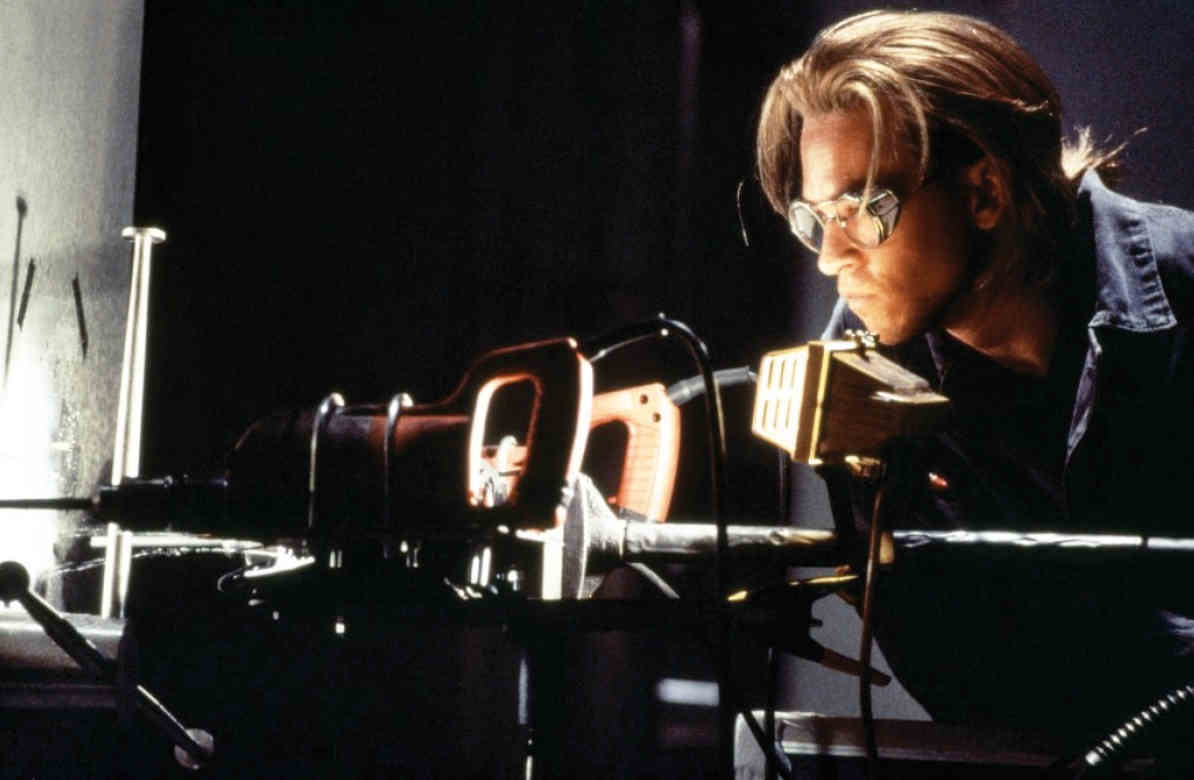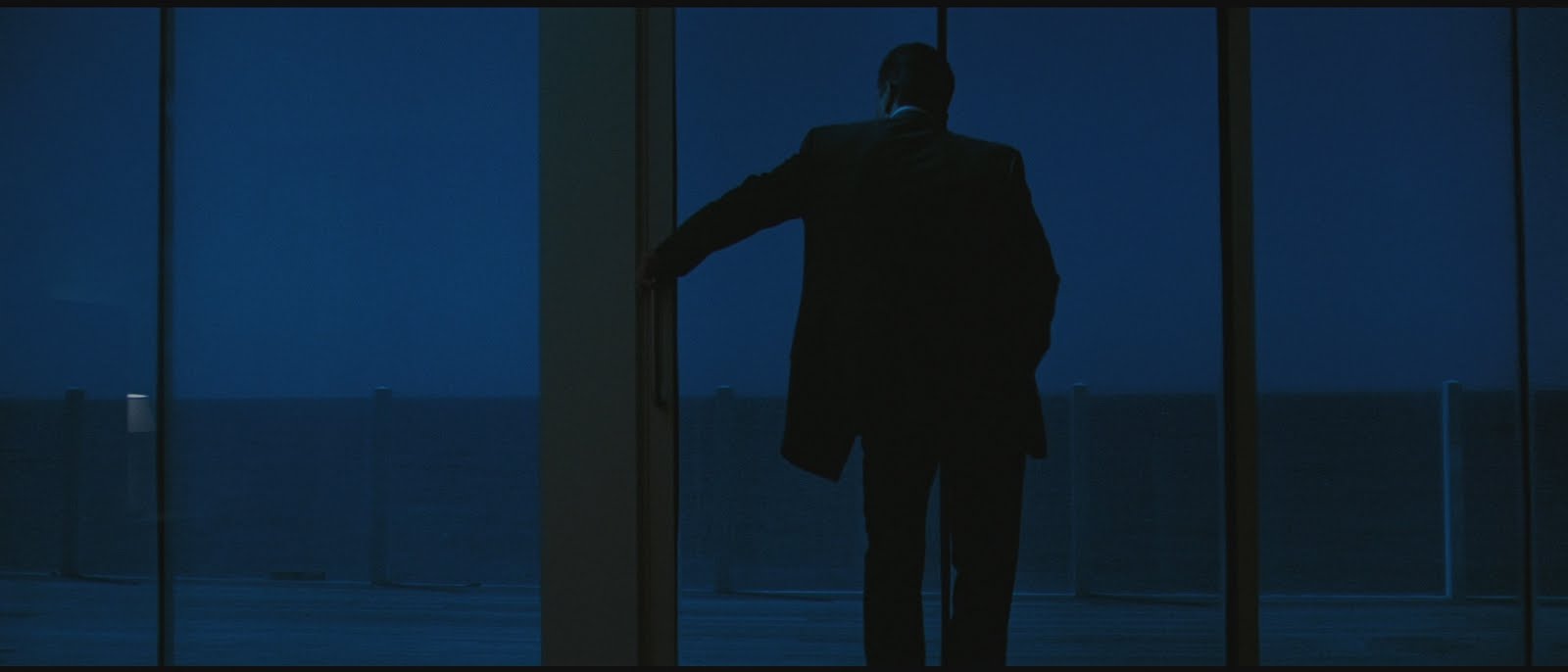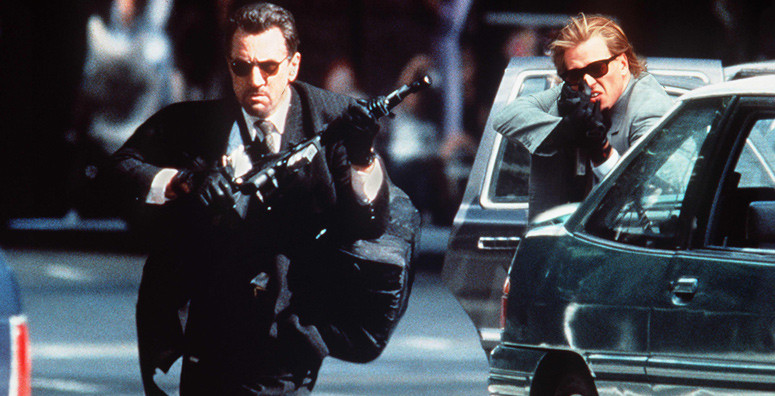4. Fine supporting actors reflect the lead’s glory

Throughout their careers, Pacino and De Niro had appeared in many films with fine supporting casts and several in which they had to be the whole show. Quite happily, “Heat” falls in the first category. Mann, as noted, has a knack for casting actors who can easily embody their roles and clearly signify to the audience just who these characters are, a vital component when sorting out a complex plot.
“Heat” has a mix of the well known (Val Kilmer, former Oscar winner Jon Voight), sturdy character performers (Tom Sizemore, Wes Studi, Mykelti Williamson, Diane Venora, Amy Brenneman, Ted Levine, William Fichtner, and Tom Noonan, among others), newcomers (future Oscar winning star Natalie Portman and Jeremy Piven), and offbeat choices (rapper Tone Loc and Ashley Judd, who suffered from a pronounced lack of respect at the time).
Stories from the set report that the actors uniformly got behind what they knew to be a quality script. Under Mann’s supervision, many researched their roles by meeting with and talking with people who live lives similar to their characters, some in prison and some in other places. It all worked, for very many of the players can point to the film as a career high (and Portman’s fine performance as the ultra-troubled daughter of Pacino’s character helped to solidify her status as a talented up-and-comer).
5. The artistry of cinematography Dante Spinotti

Dante Spinotti had been a noted cinematographer in his native Italy for some time when he came to Hollywood and, for his third American film, he was chosen by Mann for “Manhunter” (and, in a tribute to his work, was later chosen to lens the remake, “Red Dragon”). His talent hadn’t quite manifested in his two previous film but his dark and stylish work was a perfect compliment for Mann’s dark and stylish creative path.
He has done exemplary work consistently since that time (Oscar nominated for “L.A. Confidential” and another Mann film, “The Insider”). Many maintain that a large part of the reason Mann’s “The Last of the Mohicans” is so memorable is due to Spinotti’s stark but colorful and vibrant work.
In “Heat”, he needed to capture the ambiguous moods of both many characters and of L.A. itself (and between this film and “L.A. Confidential”, he may well own that city on film). Mann may have had the vision but without someone with the technical know-how and similarity of feeling to that vision, it couldn’t have happened.
The history of cinema is dotted with fruitful collaborations. Often the combination is actor-director but Mann has never built either a repertory company nor even used one actor repeatedly, but he does have a technical team mate in Spinotti. Though his work here was not nominated, it may well stand as one of the cinematographer’s finest hours, with and without his frequent partner.
6. The feel of L.A.’s criminal milieu

Quite often viewers are let down by documentaries or even real locations, which strike them as lacking in contrast to the worlds seen in fictional films. The reason for this is that often the world of the film matches up with the world that may exist within the viewer’s mind as regards a place or a specific demimonde, which may have little to do with reality.
“Heat” shows an ambiguous world where the forces of the law don’t and can’t operate without moral compromise and the criminal world exists with its own peculiar code of honor. Yes, the locations are really L.A. but a TV news camera could capture those, if that were all there was to it.
However, quite often in life, it isn’t so much what is done as much as how it’s done. Mann, Spinotti and the actors create a criminal/law world where one side endlessly reflects the other, all set against the noirish, somewhat expressionistic nightscape of the mammoth and complex California city.
Is this anything like the real criminal world of L.A. and the way in which law enforcement impinges upon it? Who can say and would it matter? The simple fact is that this version of the world exists convincingly on film and in the mind of the viewer. This cinematic space that exists here has pulse, texture, and a life force of its own. This is the kind of thing a great film accomplishes and a great filmmaker can conjure.
7. And, yes, the soundtrack

A key element in Mann’s work not noted until this entry is the soundtrack. Many remember (with a bit of verity) “Miami Vice” as one very, very long and fashionable music video. Maybe that project was a bit overladen with music (many in its later days derisively referred to the show as “MTV Cops”) but Mann learned that the musical segment of the soundtrack could be a powerful force in creating just the right mood for a film.
As with many Mann projects, the soundtrack features both already established hits from major pop/rock artists and original compositions from a noted composer. In the case of “Heat”, the recording artists include U2, Brian Eno, Moby and Joy Division, among many others.
Though these artists did make valuable additions, the really significant musician, both in terms of original composition and in arranging the works of the others, was composer Elliot Goldenthal.
Though new to film at the time (though an eventual Oscar winner and multiple nominee for pretty much all existing music awards), it is clear just from a casual listen to the score that he, like Spinotti, “got” what Mann wanted and not only composed 27 haunting and expressive minutes of the film’s score, but most effectively used the existing contributions (such as using an abridged instrumental version of Joy Division’s song, which was just right for that moment in the film).
The end result, to the surprise of nobody, was released as an album praised as “atmospheric” and “electrifying”. It was a success within its own terms but even better in conjunction with the film as a whole. It was yet another color in a grand canvas.
Author Bio: Woodson Hughes is a long-time librarian and an even longer time student/fan of film, cinema and movies. He has supervised and been publicist for three different film socieities over the years. He is married to the lovely Natalie Holden-Hughes, his eternal inspiration and wife of nearly four years.